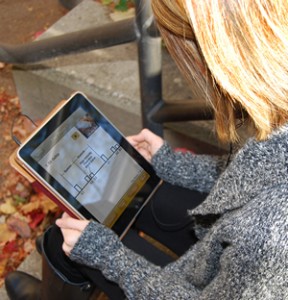Since the development of modern technology, education has advanced in ways that could have never been predicted just 20 years ago. Because of the fast pace in which technology is fueling the evolution of education, it is essentially impossible to address every single measure that played a role in this advancement. However, a few more recent tech trends have been imperative to the incredible progression that education has made to date. To spotlight a few of these current notable trends, I’ve compiled a list of the following most crucial leaders of the ed/tech revolution.
1. Tablets
According to Jody Forehand, Vice President of Product Planning for education tech firm Luidia, one factor of 2012 will be tablets and the use of iPads in the classroom. She emphasizes that this influence will extend beyond the reach tablets have enjoyed thus far. Tablet devices are not only used as excellent tools within the classroom, but are a popular medium for learning outside of a traditional setting. For example, many online bachelor degree programs are also using these devices to more conveniently access and complete course material.

2. Mobile Devices
Now that we’ve reached a point where cell phone ownership is nearing ubiquity and 40 percent of young adults own a smartphone, incorporating mobile devices into the learning environment can help unlock more opportunities for learning outside of the classroom. Smartphones give students the opportunity to access emails, course materials, and hundreds of apps designed especially for enhancing education. With the incredible usefulness of these devices, experts predict an even greater emphasis on mobile phones in the near future.
3. Bandwidth Improvement
The Federal Communications Commission will be working toward improving broadband access over the next couple of years, based on their strong belief in its importance to both education and the U.S. economy. Although the organization is pushing largely for better access across all entities, schools and libraries in particular are being targeted for the project. As more students bring mobile devices to school and tap into local networks with laptops and tablets, this extension is most certainly a necessity.
4. Digitalized Reading Materials
From textbooks for Chemistry to novels for Russian Lit, physical reading materials are slowly becoming things of the past. With the boom of e-readers and digitalized textbooks, students are able to have full interactive access to crucial reading material without the discomfort of a twenty-pound backpack. These digital readers not only make learning more convenient, but also improve reading efficiency with helpful features such as search bars, highlighters, visualizations and more.
The latest trends in education technology can be difficult to keep up with, but acquiring a current understanding of how technology affects learning is important for getting the most out of your education. Whether you’re involved in an academic program at the moment or you’re just a lifelong learner, these trends will help ensure a promising future for education.
